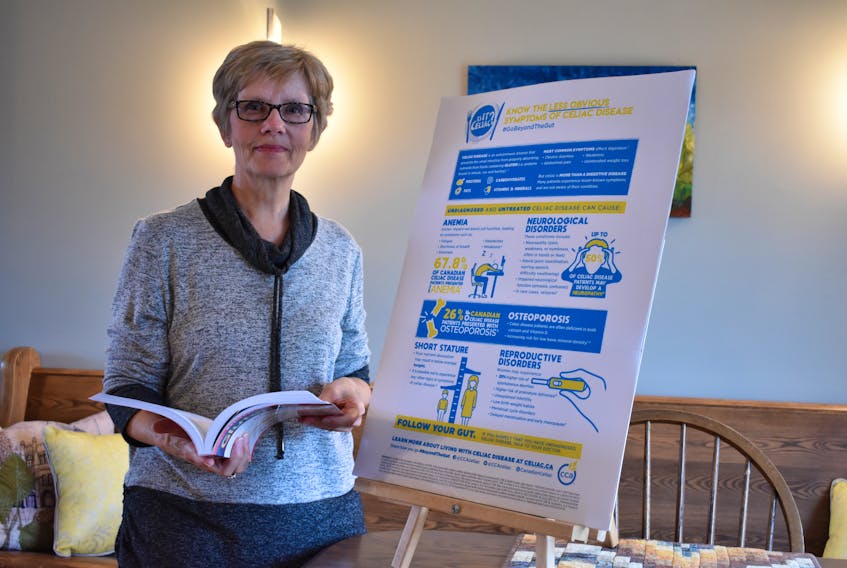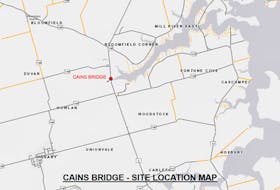SUMMERSIDE, P.E.I. — Jo Ann Doughart hadn’t been feeling well for a while.
A consistent burning sensation in her mouth turned into chronic, painful canker sores; she was having occasional vision trouble from silent migraines, balance problems, weight loss and she was always tired.
Doughart experienced a stroke of luck while at her family doctor for regular blood work.
Her doctor called the next day with a surprising question.
“Were we talking about celiac disease?”
“I don’t even know what that is,” said Doughart.
“Well, you have it.”
Five facts from the Canadian Celiac Association (CCA):
- Celiac disease inherited; symptoms may develop at any age.
- Celiac disease is a life-long disease; the only known treatment is a gluten-free diet.
- Blood screening tests (EMA or tTG) may suggest that a person has celiac disease, but they do not replace the need for an intestinal biopsy. Intestinal biopsies are the only definitive means of diagnosing celiac disease.
- Recent research has found celiac disease affects one percent of people. The CCA estimates about 80 per cent of people with the disease don’t know they have it.
- A gluten-free diet should not be started until the diagnosis of celiac disease by blood test and biopsy. Going gluten-free before the tests allows the villous damage to improve which may give inconclusive results and further delay the diagnosis of celiac disease.
More information at www.celiac.ca
The doctor had checked the box for the celiac blood test by accident.
Doughart went for a biopsy to confirm the diagnosis and began a gluten-free diet.
May is celiac awareness month and the 2019 campaign is “Go beyond the gut.”
People usually feel the disease in their tummy when digestion is affected, but some people, like Doughart, have other, less typical, symptoms.
Doughart, who is president of the P.E.I. Chapter of the Canadian Celiac Association, has been travelling the Island with information and raffle tickets on a basket of naturally gluten-free foods throughout the month of May.
Celiac is an auto-immune disease that affects the lining of the small intestine and makes it hard for the body to absorb nutrients. The body thinks gluten – a protein in wheat, rye and barley – is an invader. The immune system attacks the gluten but ends up harming the body.
It’s a genetic disease that can start at any time.
If left untreated, celiac disease can cause reproductive disorders or a loss of bone density.
She is fortunate her condition was caught when it was.
It takes an average of 12 years for an adult to be diagnosed once they start having symptoms, said Doughart.
"Once you become deficient in nutrients, it can really start to affect all the systems in your body. That's why it's so difficult to diagnose, doctors may be looking at symptoms in isolation.”
She eliminated gluten from her diet and her symptoms stopped.

“Once you get on a strict, gluten-free diet generally the intestine heals. Once you start absorbing nutrients again, a lot of those symptoms disappear,” said Doughart.
Funds raised during May will be used to offer peer support programs, online resources and guest speakers.
“With younger generations, more and more people are looking for information online, which can be a problem, because not all information is accurate that’s online. We’re hoping we can reach people that need that information, especially the newly-diagnosed, and provide them with accurate, credible information,” said Doughart.
Another resource for those with celiac disease are dietitians like Bernadette Campbell.
She said folks with celiac disease sometimes struggle to get enough fibre in their diets. Campbell reminds them to make sure they're eating enough fruits and vegetables and to learn which grains are gluten-free.
"For the most part, your protein foods like meat, fish, chicken are fine, but you want to avoid anything that's been breaded or processed until you know that it's gluten-free," said Campbell.
For people with celiac disease, a gluten-free diet is not a short-term thing.
“Once you have the diagnosis, it’s a diagnosis. It doesn’t go away,” she said. “You just get into a pattern of eating where you recognize which foods are safe for you and do as much of your own meal prep as you can.”
Sometimes gluten can creep in, but regular bloodwork and occasional scopes as recommended by a family doctor can help make sure patients are on-track, said the dietitian.
It’s important to adhere to the dietary guidelines as there can be long-term health issues from not following a gluten-free diet, said Campbell.
Patients, families and health-care practitioners can visit the Canadian Celiac Association website for up-to-date research and advice.









